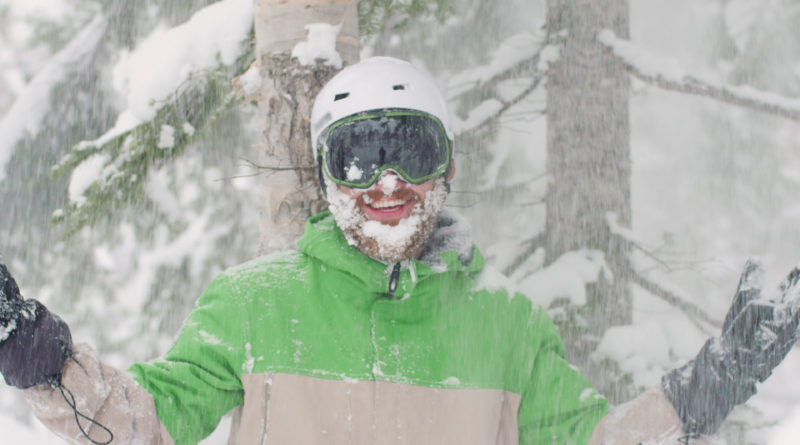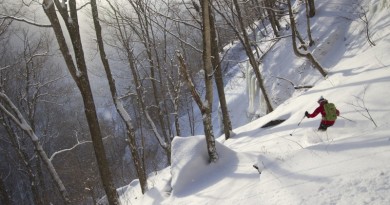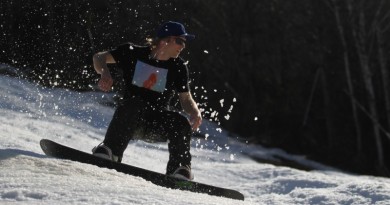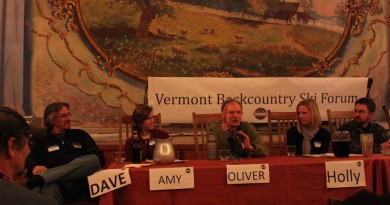NWS Announces New Ski Area Forecasting Program, VT Observatory
APRIL 1- Burlington, VT: The National Weather Service announced today that it will be launching a new weather forecasting pilot program at ski areas around Vermont that could revolutionize snowfall forecasting, conditions reports, track climate change and improve skier safety.
“This new program will offer detailed, highly-localized forecasts from both science-based tools and respected on-the-ground reporters. It promises to change the ski experience for the better,” NWS northeast communications director Mark Graupel said in a Zoom press briefing.
“What we see is that even our best forecasts for an area such as Chittenden County are too general. We are not able to pinpoint forecasts to say, for instance, that there will be 14.71 inches of snow at Bolton Valley, 10.98 inches at Cochran’s while across the mountain, Stowe will get only 6.32, but that’s what often happens,” Graupel noted.
While ski areas post their own forecasts and snow reports, with the advent of centralized website systems such as those used by Vail Resorts, many are generated by leather-shoed desk dwellers in the Denver suburbs and bear little resemblance to what actually happens in the Green Mountains.
“We hope this new forecasting project will give skiers and riders real-time intel as to the actual conditions versus getting their beta from, say, a corporate resort reporter, a Facebook group, or some weather hobbyist sitting in his basement in Albany reading “Meteorology for Dummies,” said Graupel.
The program will have several components. In 2022, electronically monitored Real Time Snow Stakes (or RTSS, a trademarked name) will be installed at Vermont’s 22 ski areas. “We’re calling this ‘22 for 22,’” Graupel said.
“Our goal is to take the human error – or tendency for wild-ass exaggeration, out of this,” Graupel said.
New RTSS stations will be posted at the summits of ski areas from Burke to Mount Snow. “No more putting your resort snow stake under the eaves of the roof, eyeballing it from the marketing office window and then claiming an ‘overnight’ dump of 6 feet,” Graupel said. “And we’ll find out if that ‘Jay Cloud’ is real or just bong vapor.”
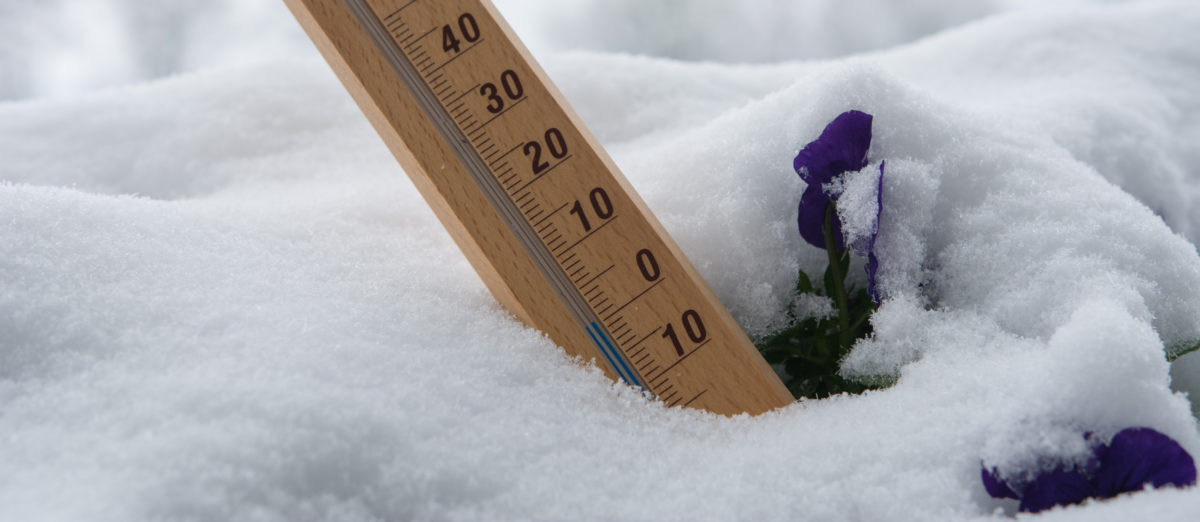 A second component Graupel calls a statewide “Authentic Reports Team.” “Vermont has legions of farmers, hunters and sugarers who read the weather better than many trained meteorologists and who put the results in simpler terms,” he said.
A second component Graupel calls a statewide “Authentic Reports Team.” “Vermont has legions of farmers, hunters and sugarers who read the weather better than many trained meteorologists and who put the results in simpler terms,” he said.
Graupel then introduced some members of the team.
Ebenezer Crankshaft, 87 and a life-long dairy farmer from the Northeast Kingdom, is one. “Ya, I don’t have much time for them fancy phrases like ‘whorographic lift’ or ‘bimbogenesis,’ Crankshaft said. “ I just know that when my gals lay down in their stalls at night, the next day my fields are gonna be whiter than a town meeting in East Corinth.”
Isaiah Mapplethorn, 63, who is the seventh generation to carry on his family’s sugaring operation in Dummerston is another. “Our family’s been counting rings on those wooly caterpillars each fall for nearly two centuries. Dang if those wooly buggers ain’t got it right every time,” he said. “
Scott Graten, 40, a Stowe local and ski bum since he was 2, is a third. “If you see cars sliding back down Stowe’s Harlow Hill at 6:00 am, you know there’s a layer of dense wet snow that is likely to dry out into powder during the day,” he offered as an example.
Crankshaft, Mapplethorn, Graten and the other members will broadcast their live reports in conjunction with the Fairbanks Museum’s Eye on the Sky daily forecasts.
The third and most exciting announcement is a new National Weather Service observatory is being planned for the summit of Mt. Mansfield.
“We’ve seen the good work the Mt. Washington Observatory has done and want to replicate that here in Vermont,” said Graupel. “Judging from the number of days that Stowe and Smuggler’s Notch had lifts on wind-hold, we believe we may actually get higher average wind speeds than Mt. Washington does and this will help us monitor that.” Mt. Washington holds the world record for recording a wind speed of 231 mph.
One indicator the new observatory will use is Roxy, a 33-lb. Labradoodle, who will be tied to a post outside the station. “When Roxy barks three times, we know a storm is coming. When she is blowing sideways off her leash, we can tell it’s honking windy, likely over 75 mph.”
Similar to Mt. Washington’s, the new observatory will also have a safety and avalanche center. “This will help rescuers respond to the increasing number of incidents occurring in the Mt. Mansfield sidecountry such as when skiers and riders intentionally trigger small slides for their Instagram posts or folks get lost in the puckerbrush off the Bruce Trail.” Construction of the new Mt. Mansfield Observatory is scheduled to begin on April 1, 2024.
When asked about today’s forecast for April 1, Graupel turned to the ART members.
“Yep, it’ll come down just a bit thicker today than old Grandpa Joe’s dandruff,” Crankshaft forecasted.
Eds. Note: Happy April 1. Here are a few more April 1 posts from previous years.

